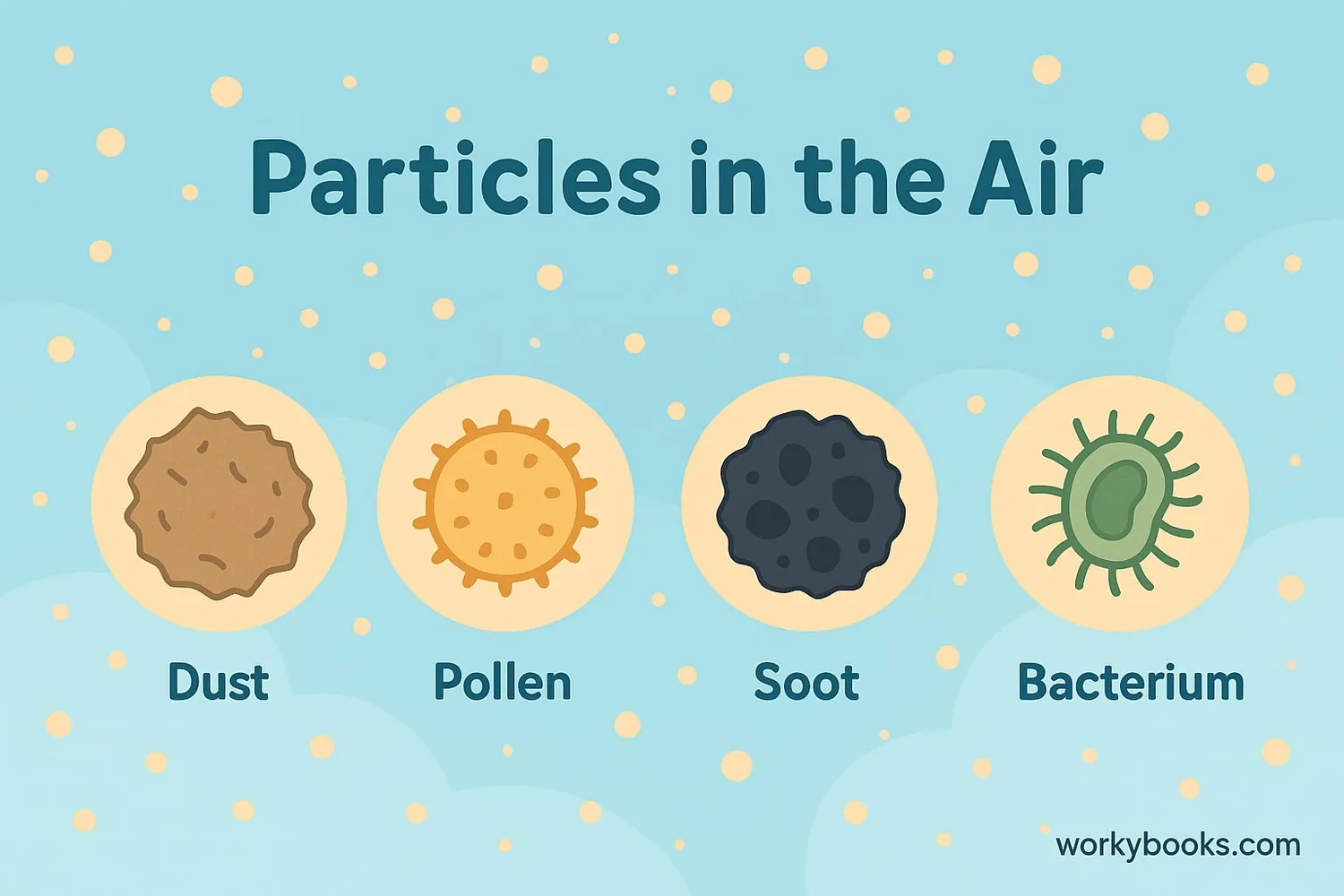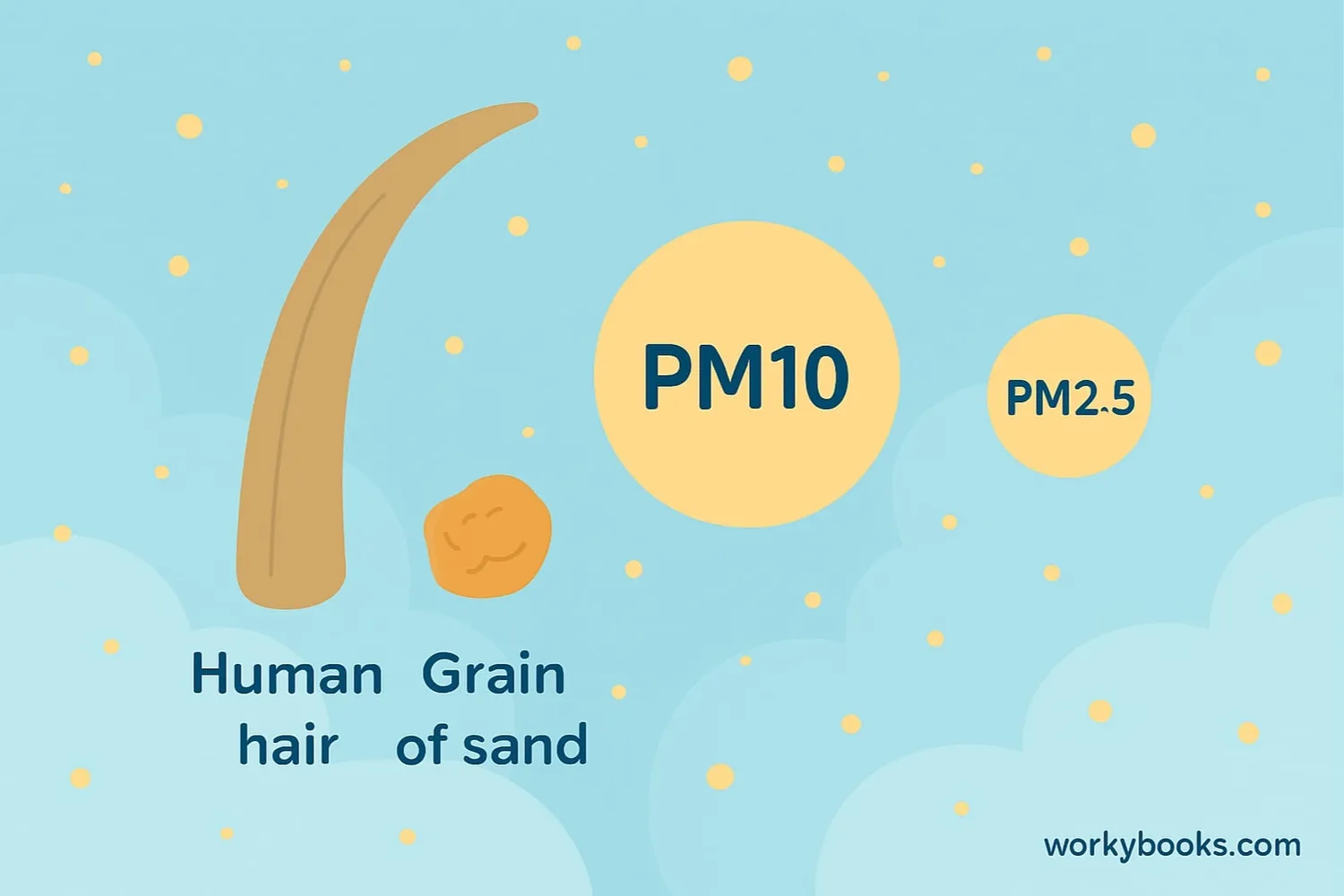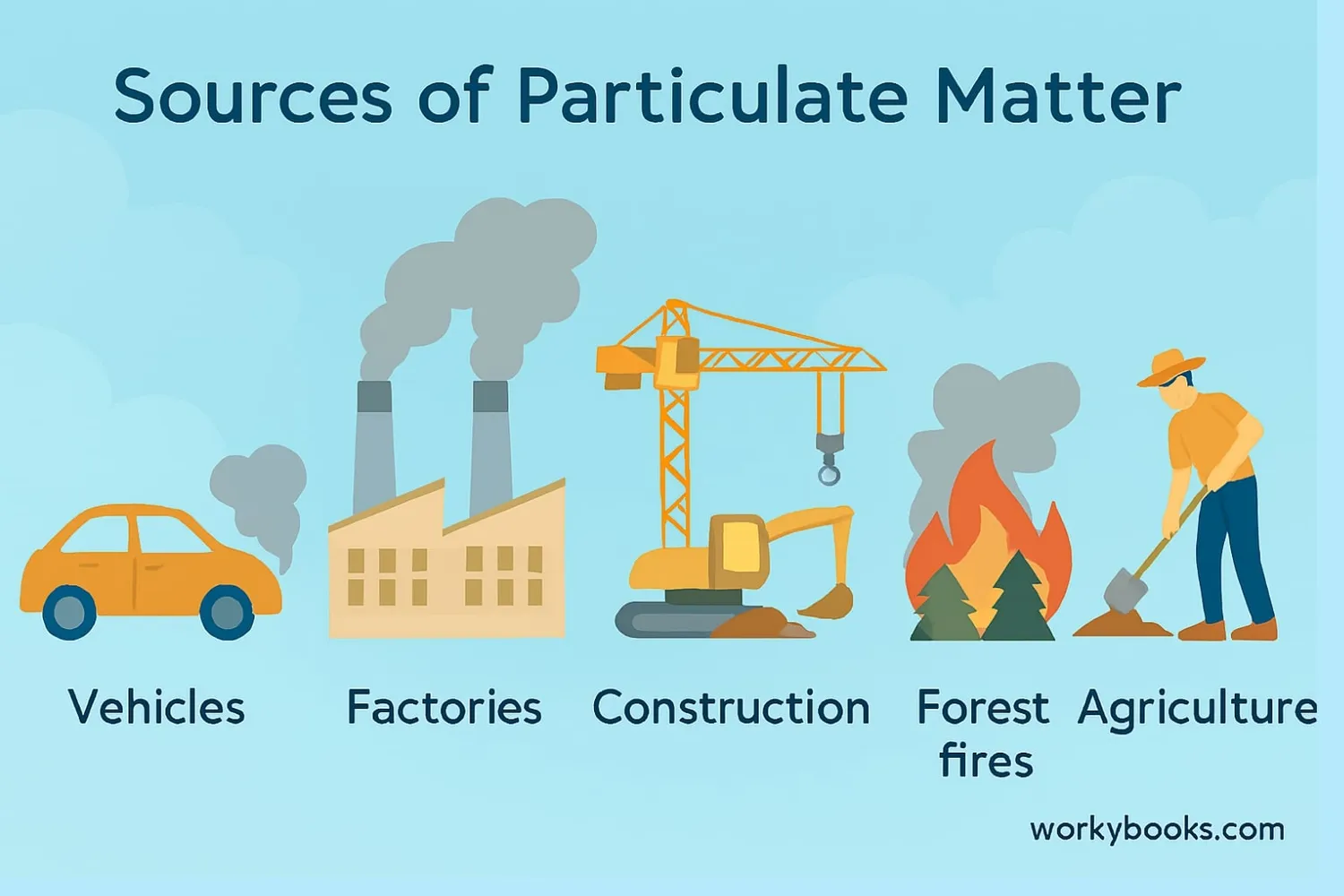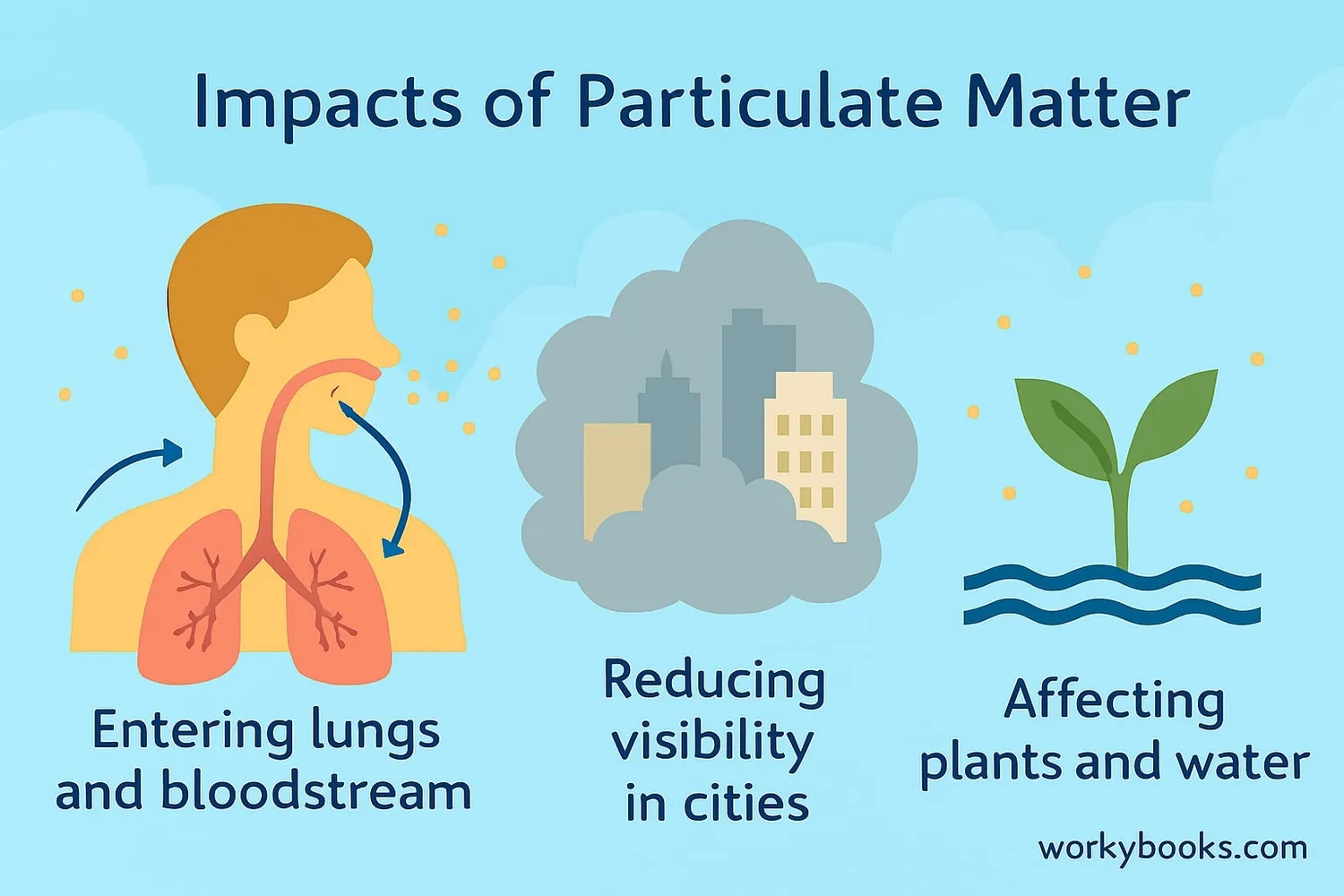Particulate Matter - Definition, Examples, Quiz, FAQ, Trivia
Discover how tiny particles in the air affect our health and environment!
What is Particulate Matter?

Particulate matter (PM) is a mixture of tiny solid particles and liquid droplets found in the air. These particles are so small that you often can't see them individually, but when there are many of them, they can make the air look hazy or dirty.
Think of particulate matter like the dust you see floating in a sunbeam, but much smaller! Some particles are so tiny that thousands of them could fit on the period at the end of this sentence. These tiny particles can travel deep into our lungs when we breathe, which is why they're important to understand.
Did You Know?
Particulate matter is often measured in micrometers (μm). One micrometer is one millionth of a meter, or about 1/70th the width of a human hair!
Types and Sizes of Particulate Matter

Scientists classify particulate matter by size because the size determines how far particles can travel in the air and how deeply they can enter our lungs when we breathe. The two main categories are:
PM10
Coarse particles between 2.5 and 10 micrometers in diameter (about 1/7th the width of a human hair)
PM2.5
Fine particles smaller than 2.5 micrometers (about 1/30th the width of a human hair)
Ultrafine
Particles smaller than 0.1 micrometers that can enter the bloodstream
PM2.5 particles are especially concerning because they're so small that they can travel deep into our lungs and even enter our bloodstream. These fine particles can be made of different materials like dust, soot, smoke, or chemicals.
Size Matters!
PM2.5 particles are so small that they can remain airborne for days or weeks and travel hundreds or even thousands of miles from their source!
Sources of Particulate Matter

Particulate matter can come from many different sources, both human-made and natural. Some particles are directly emitted into the air, while others form when gases from pollution react with sunlight and water vapor in the atmosphere.
Human Activities
Vehicle exhaust, power plants, industrial processes, construction, agriculture, and burning wood or fossil fuels
Natural Sources
Forest fires, dust storms, volcanic eruptions, sea spray, and pollen from plants
Indoor Sources
Tobacco smoke, cooking, burning candles, fireplaces, and dust from activities like cleaning
In many cities, the main sources of particulate matter are:
• Vehicles (cars, trucks, buses)
• Power plants that burn coal or natural gas
• Industrial processes
• Construction and road dust
• Residential wood burning
The specific sources can vary by location, season, and weather conditions.
Health and Environmental Effects

Particulate matter can have significant effects on both human health and the environment. The smaller the particles, the more dangerous they can be because they can travel deeper into our respiratory system.
Health Effects
Can cause coughing, wheezing, asthma attacks, heart attacks, and premature death, especially in children, elderly, and people with existing health conditions
Visibility Reduction
Particles scatter and absorb light, causing haze and reducing visibility in cities and natural areas
Environmental Effects
Can damage plants, acidify water bodies, change nutrient balance in soil and water, and contribute to climate change
To protect public health, governments have created the Air Quality Index (AQI) to help people understand how clean or polluted the air is each day. When particulate matter levels are high, people with respiratory conditions may need to limit their time outdoors.
Staying Safe
On days with high particulate matter levels, you can protect yourself by staying indoors, keeping windows closed, and avoiding strenuous outdoor activities.
Particulate Matter Knowledge Check
Test your knowledge about particulate matter with this quiz! Answer all 5 questions to see how much you've learned.
Frequently Asked Questions
Here are answers to some common questions about particulate matter:
Interesting Facts About Particulate Matter
Discover some fascinating facts about particulate matter!
Tiny Measurements
PM2.5 particles are so small that about 30 of them would fit across the width of a human hair! They're measured in micrometers, which are one millionth of a meter.
Long-Distance Travelers
Particulate matter can travel incredible distances. Dust from the Sahara Desert has been found in Florida and the Caribbean, having traveled thousands of miles across the Atlantic Ocean!
Historical Awareness
People have been aware of air pollution for centuries. In 1306, King Edward I of England banned the burning of sea coal in London because of the smoke it produced.
Global Health Impact
According to the World Health Organization, air pollution (mostly from particulate matter) is responsible for about 7 million premature deaths worldwide each year.





